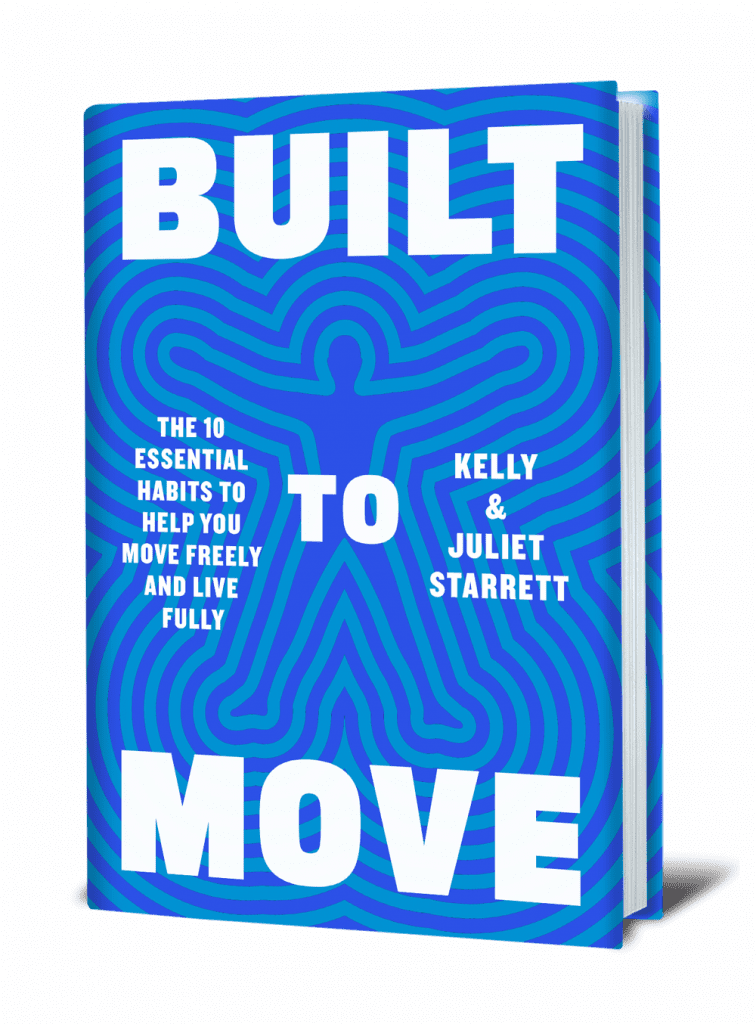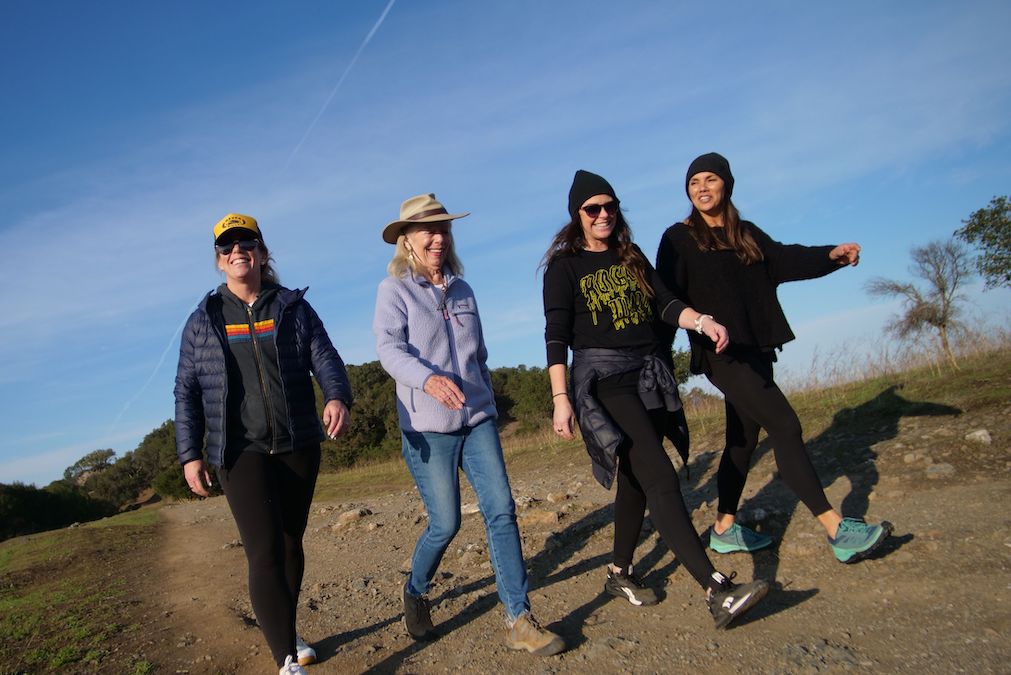8 Simple Ways To Walk More
It’s safe to say that finding 8 simple ways to walk more and get those steps in can make a big difference on overall health.
When someone brings up “steps per day,” you probably know exactly what they’re talking about. But when you were growing up, you probably never heard those three words strung together. The fact that they’re now part of the everyday lexicon is a testament to the fact that how much you move your feet on any given day matters. And it matters a lot!
To quote the National lnstitutes of Health (NIH) report on the results of a 2020 study: “Adults who took 8,000 or more steps a day had a reduced risk of death over the following decade than those who only walked 4,000 steps a day.” And: “Step intensity (number of steps per minute) didn’t influence the risk of death, suggesting that the total number of steps per day is more important than intensity.”
Take the Opportunity to Move
In our book Built to Move, we recommend getting 8,000 to 10,000 steps per day; even better if you can hit 12,000. Daunting? Not if you’re clever about it. First, think about this: Although getting in 8,000 or more steps requires taking some walks, it’s not only walks that allow you to drive up your step count. Anytime you’re moving around—while cooking and cleaning in the kitchen, taking out the trash, heading from your desk down the hall to the bathroom, going to the end of the driveway to get your mail, puttering around the garden, transferring stuff from your closet to the garage, ambling over to a colleague’s desk—you are racking up steps. The message here is that if you avoid sitting in one place all day, you will get all the closer to achieving the healthy goals set out by the NIH.
Here are 8 Simple Ways To Walk More
Chances are, you’ve probably heard the usual tips for getting more steps in, i.e.: park further from your destination, substitute going up and down the stairs for using the elevator, take a few spins around an actual market instead of ordering groceries online, choose the restaurant ten blocks from your office rather than the one downstairs. You get the drift so we won’t list any more of the most obvious suggestions here. Instead, let’s focus on some bigger-picture ways to improve your step score.
Walking the Walk
All those little interventions we just mentioned are nothing to sneeze at; they all add up. But you’re also most likely going to have to take actual walks to meet your steps goal. Here are some ways to help make that happen.
- We’re big fans of the post-prandial walk. Much as your pleasure-oriented brain will tell you to plop down on the couch and relax after eating, taking a ten-minute walk after each meal is not only a good way to ensure the numbers on your pedometer rise, it’s also improves digestion and other aspects of health. A recent study published in Sports Medicine found that even 2 to 5 minutes of walking after a meal improved insulin and blood sugar levels, markers related to heart health. (Though we will say this: As long as you’re going to walk 2 minutes, why not walk 10 or 15? Everyone can spare 10 or 15.)
- The same study that looked at post-prandial walking also looked at post-prandial standing. It, too, offered a small health benefit, but not as much as walking. So, certainly, standing is better than the BarcaLounger option, and we’re big fans of standing and standing desks. That said, getting a standing desk and remaining as motionless as a robot all day is not what we’re going for. Change positions as you stand and, rather than feeling complacent because you’re doing a good thing by standing (and you are!), create opportunities for yourself to also walk around during the day.
- If you’re regular exerciser, tack on a 15- to 30-minute walk after your workout. You’ve already set aside time in your schedule and you’re already in activity mode, so why not take it a little further? Besides helping you raise your step count, walking after taxing physical activity helps you clear lactate from the blood so you feel less stiff the next day, and it encourages better adaptation to the paces you’ve just put your body though.
- We should mention here that the common—and erroneous—wisdom is that if you’re already working out, you don’t need to worry about your steps per day. Depending on what you’re doing (hiking or running, for instance), your work out may contribute to your steps-per-day count, but you still need to hit that 8,000 to 10,000 mark. There really is no substitute for being on your feet and moving many, many times a day—your body needs it. Counting steps just helps you, well, stay in step with that particular demand.
- Walking and talking—is there any better way to connect with people? We think not. Let the opportunity to socialize be your incentive to walk more. Make regular walking, not coffee dates. Get your significant other, kids, or other family members to take to the streets with you. One good thing that came out of the pandemic (at least anecdotally) was that, with gyms closed and not much else to do, a lot of people began walking around their neighborhoods with family members or friends in their “Covid-free pod.” This resulted in great conversations, closer relationships, and more familiarity with the people in their community (albeit at a six-foot distance). And these hidden benefits are just as important for good health as the steps you’re taking.
- Anson Dorrance, head coach of the women’s soccer team at the University of North Carolina, prescribes his players 800 meters of walking as part of their workouts. For a while, he took the walking out of the practice sessions, only to find that mayhem ensued—the team wasn’t doing nearly as well. It turned out that the time the women spent walking gave them a chance to bond and that enhanced their playing. Walking, paired with talking, doubles the pay-off.
- If you need incentive to walk, consider that it’s one of the best ways to ensure that you’ll sleep well at night. Walking, even if you’re not doing it at a fast pace, is fatiguing (and doing it outdoors during the day exposes you to light, which helps with the circadian rhythm so instrumental in helping us snooze).
- When all else fails, get a dog. Or borrow one. If you’re committed to an animal, you’ll have no choice but to walk. All creatures, great and small, need to get their steps in.

Ten essential habits to help you move freely.
This is the first body book written for exercisers and nonexercisers alike. Built to Move introduces readers to a set of simple principles and practices that are undemanding enough to work into any busy schedule, lead to greater ease of movement, better health, and a happier life.
PREORDER NOW!



















TRS Virtual Mobility Coach
Guided mobilization videos customized for your body and lifestyle.
FREE 7-Day Trial